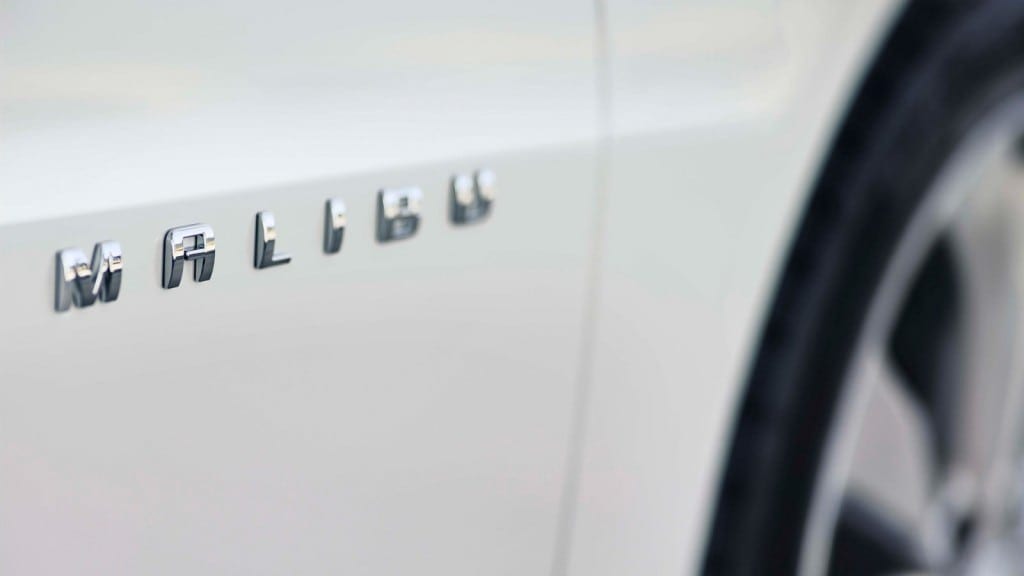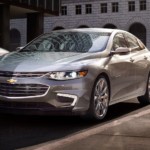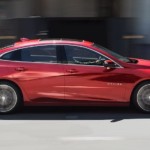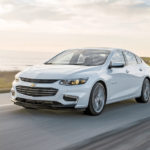The Chevy Malibu has been on the market for more than half a century! That’s an incredible accomplishment for any individual nameplate, although we can’t say we’re surprised that this specific midsize car has continued to sustain its success for so long. The Malibu offers everything a driver could possibly want from a sedan: style, comfort, power, and affordability.
These attributes have consistently been featured since the original Malibu was released in 1964. The vehicle’s engineers have found ways to revitalize the nameplate, perhaps explaining why the car continually attracts new owners. Let’s take a step back in time and explore the evolution of one of Chevy’s most famous models…
First Generation (1964-67)
When the Malibu first hit the market in the early 1960s, the midsize car was actually regarded as a premium sedan. This wasn’t a questionable designation, as the nameplate featured a number of innovative features that weren’t commonplace in your standard car.
Of course, the brand didn’t stick to that classification for very long. During this same timeframe, the muscle car segment was increasing in popularity, so engineers quickly shifted focus and released their Malibu SS. Eventually, the Chevelle SS became the brand’s premier muscle car, so the Malibu reclaimed its moniker of a premium sedan. Luckily, by the mid-1960s, customers were starting to recognize the positive attributes of the nameplate, particularly the interior space and solid efficiency specs.
Second Generation (1968-72)
The design of the second-generation Malibu didn’t change much from the previous generation, although each individual model year featured specific, distinctive styling cues (similar to the first generation). The major change was in regards to exterior dimensions, as the wheelbases were slightly altered.
The coupes and convertibles saw a slight decrease in wheelbase length at 112 inches. Meanwhile, the sedans and wagons were a bit longer at 116 inches. Either way, the Malibu still delivered the same amount of cargo room that customers had come to expect.
Third Generation (1973-1977)
For this third generation, engineers once again altered several of the Malibu’s exterior dimensions. The wheelbase lengths were well regarded, so they stuck around for several more years. However, to adhere to the new federal safety and crash regulations, the bodies saw a five-inch increase in length and a one-inch increase in width.
Perhaps most impressively, the Malibu continued its reign as the brand’s top midsize car. The Chevy Laguna, a European-based sedan, briefly saw time atop the sales list, but the Malibu quickly reclaimed its place of honor.
Fourth Generation (1978-83)
Following the Chevelle’s retirement in 1977, Chevy was looking for a name to accompany their grouping of vehicles that fell behind the midsize segment. From that point forward, “the next generation of downsized midsize cars” were referred to as Malibus (as described in a 2015 Chevy press release).
These smaller Malibus were a foot shorter than the previous generation and they also lost 500 pounds of weight. The more agile vehicle was partnered with either a V6 or V8 engine. The combination of power and newfound athleticism made it a popular choice for local police departments.
Fifth Generation (1997-2003)
Despite its apparent popularity, Chevy pulled the Malibu from the market in 1983. The nameplate was absent for nearly 15 years but finally made its long-awaited return in 1997 with the release of the fifth generation.
The vehicle predictably offered modern amenities and upgraded capabilities. The Malibu’s main new attribute was the inclusion of the front-wheel-drive technology, which delivered excellent traction and drivability. Partnered with either a V6 or V8 engine, the Malibu was a logical choice for those living in any parts of the country. Considering its versatility, the new Chevy Malibu ended up being named Motor Trend‘s “Car of the Year” in 1997.
Sixth Generation (2004-07)
With the transition to General Motor’s “award-winning global platform,” the Malibu saw the release of its sixth generation in 2004. The revamped nameplate saw improved performance and fuel efficiency, as well as the inclusion of advanced technology.
Perhaps most notably was the reintroduction of the Malibu SS, which was last seen in the 1960s. The vehicle featured an impressive 240-horsepower 3.9-liter V6 engine. Other variations of the Malibu included the Malibu MAXX five-door extended sedan, which offered increased cargo space and exclusive seat manipulation capabilities.
Seventh Generation (2008-12)
Throughout the 2000s, engineers were constantly looking for innovative and unique technology to include in their latest models and nameplates. This was clearly a priority for the Malibu’s designers, as the nameplate was full of creative and exclusive features that helped improve several aspects of the driving experience.
The Malibu also offered some of the best safety technologies in the entire class, highlighted by the head curtain side air bags. Thanks to the various additions and revisions, the nameplate was named the 2008 North American Car of the Year at the North American International Auto Show.
Eighth Generation (2013-14)
The nameplate saw another major redesign in 2013 upon the release of the eighth generation. The engines delivered improved efficiency, the interior offered several connectivity and comfort features, and the front-end of the Malibu featured a distinctive new look.
The brand also unveiled the segment’s first engine to offer the popular start/stop technology, which drastically bumps driver’s fuel economy. Meanwhile, the upgraded 2.0-liter turbo engine delivered incredible power at 259 horsepower.
Ninth Generation (2016-)
The current generation of Malibus was released earlier this year. The vehicle offers roomier interior dimensions while the safety capabilities were among the most innovative in the Malibu’s history. Several of these safety amenities were Teen Driver-focused, as the car’s system would allow parents to monitor their child’s driving habits.
The brand also released a new hybrid powertrain to accompany their Malibu, with the engine expected to deliver up to a 48 mile per gallon city fuel economy.
When the Malibu was first released, we doubt anyone anticipated this kind of success. The current crop of Chevy Malibus differs greatly from those available in the 1960s, although the brand has done an admirable job retaining some of the nameplate’s recognizable and distinguishable features. The brand’s current engineers are clearly focused on making each year’s Malibu “the best one yet.” This is why the midsize car will continue to be a hit for the foreseeable future.







